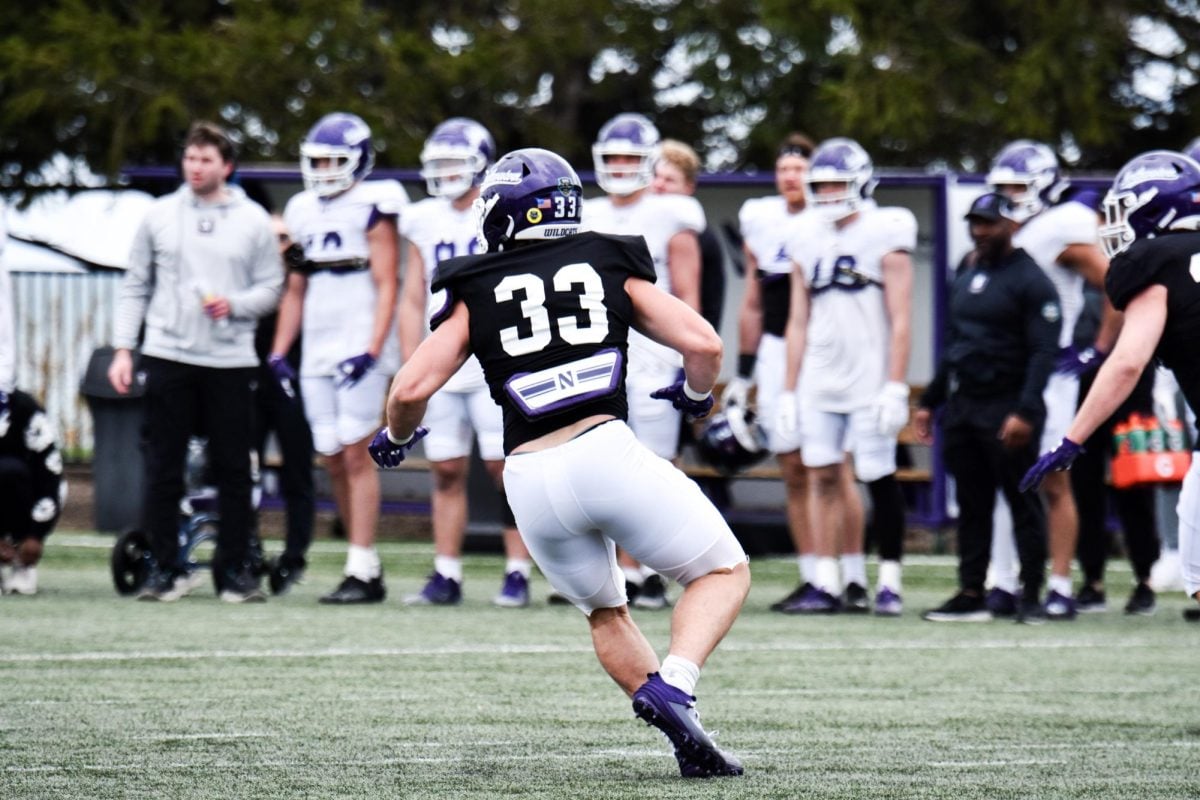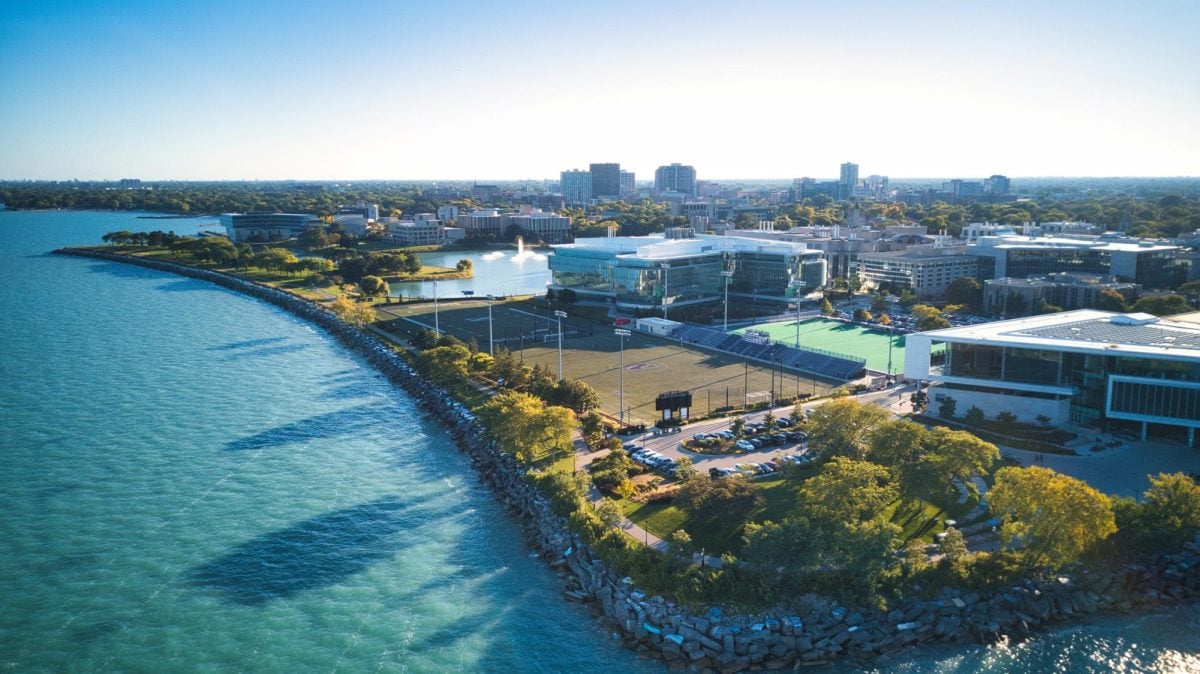When Northwestern returns to Memorial Stadium this Saturday, it will be a different venue than the one it slumped off of in 2008 after a crushing 21-19 defeat to Indiana.
After the Wildcats left, the Hoosiers embarked on a massive renovation project, echoing changes NU made in the mid-1990s to help turn around its program. Indiana hopes a new stadium will help reverse its fortunes, after compiling a 11-48 record in Big Ten play since 2003.
The project included the construction of a student-athlete development center in the north end zone, connecting the stadium’s east and west stands.
In addition to giving the stadium its horseshoe shape, the facility houses a state-of-the-art strength and conditioning center, new football offices, staff and administrative offices and a team auditorium.
“It showed a great commitment to football in Indiana, which has paid off with our current players,” Indiana coach Bill Lynch said. “Certainly in our recruiting, they’ve seen that kind of commitment.”
The team also constructed a brand-new scoreboard.
“We feel like Memorial Stadium is a different place than it’s been in the past,” Lynch said. “The game-day experience in Bloomington is different.”
The Hoosiers are hardly alone when it comes to costly stadium renovations. A number of Big Ten teams have launched critical renovation projects in the past decade.
Wisconsin’s Camp Randall Stadium underwent a four-year, $109.5 million project beginning in 2001. Iowa’s $89 million renovation of Kinnick Stadium was completed in 2006, and Minnesota went even further, spending $288.5 million on a sparkling new home, TCF Bank Stadium.
Now, NU is exploring how to rejoin its Big Ten brethren.
On Thursday, the University revealed it will begin a master study in November of how the school can improve its athletic facilities. They have hired the services of Populous, an international design company that helped develop master plans for many universities, including Indiana, in the past.
“We can’t express our enthusiasm enough about this athletic facilities master plan,” athletic director Jim Phillips said in the news release. “This is a monumental milestone for Northwestern’s department of athletics and recreation as well as our entire campus, as this study affects not only our intercollegiate athletic program but also the recreation program for our students, faculty and staff.”
NU’s last major athletics renovation project took place from 1996 to 1997, and Shon Morris, director of development at NU, is well-aware of the advances the school’s Big Ten foes have made.
“When we did it in the 1996-1997 timeline, it really moved up the chain of command within the league, and people came to see what we did,” Morris said. “People have taken that and taken it to another level, so we’re at a point now where we need to reinvest.”
From a lightbulb to a palace
NU’s football facilities have come a long way in the past several decades. When coach Pat Fitzgerald met with former coach Ara Parseghian, who led the Wildcats from 1956 to 1963, over spring break, Parseghian described to the young coach how bare bones the program was when he arrived.
“He told me some great stories from the day he showed up in the training room, and there was a light bulb hanging from a wire,” Fitzgerald said. “That was how they lit their training room. He saw some things that needed to be improved, and he went about that plan.”
Yet, when Fitzgerald arrived on campus in the mid-1990s, NU’s facilities were still lacking compared to other schools. In fact, when the team made the Rose Bowl in 1995, the Cats had to travel to California two weeks early just to find a place they could practice because NU didn’t have an indoor practice facility.
“The needs were significant,” Morris said. “(The stadium) was in a position where it was probably close to being borderline condemned, to be honest with you. That facility had really fallen into a state of disrepair.”
Fortunately for the Cats, they put up several impressive seasons in the mid-’90s after decades of losing, and the team’s resurgence helped build support for much-needed renovations.
“I actually feel like we’re part of the brick and mortar,” Fitzgerald said. “We were able to get the program turned in the right direction, and that kind of success led to a University-wide decision to make some upgrades. I actually take a lot of pride it in when I walk in. I feel like I played a part in that happening.”
In 1996, NU embarked on a $30 million renovation program. The first step was building a new indoor practice facility, named Trienens Hall after the school’s former board of trustees chairman, which opened that fall.
Then, immediately after the final game of the 1996 season, NU began work on its home turf, then called Dyche Stadium. The team made a number of changes, from building a new press box to changing the playing surface from artificial turf to grass.
The team’s decision to switch to natural grass received multiple accolades. Ryan Field was named the 2000 College Football “Field of the Year” by the Sports Turf Managers Association, and Recreation Management Magazine named Ryan Field one of the “Country’s Best” in 2004.
NU also constructed the facility behind the north end zone, which houses the team’s training room, equipment room and locker rooms. When the work was done, the stadium was renamed Ryan Field after Patrick Ryan, the former chair of the University’s Board of Trustees.
When Fitzgerald came back to coach at NU, he noticed the differences immediately.
“It’s night and day, ” Fitzgerald said. “We’ve come a long way, but the good news is we’re far from being complete and done, so that’s exciting for me.”
And the players have noticed changes as well, even over the past couple years.
“The facilities are getting better and better,” senior defensive tackle Corbin Bryant said. “It assists us a lot. The better the stuff we have, the more we can get our bodies right and the more we can prepare for games.”
Sparkling new facilities serve multiple purposes. One of the primary benefits of new buildings can be seen in recruiting efforts.
“Kids want to play in things that are state-of-the-art and that give them an opportunity to be developed the right way,” Fitzgerald said. “It shows commitment that we’ll give them all the resources that they need to be successful.”
And on a practical level, the facilities help NU compete on the field.
“I don’t think there’s any question that it certainly leveled the playing field with the people we compete against and suit up against on Saturdays,” Morris said. “Doing what you need to do with facilities is critical to maintaining that success.”
New facilities?
Fourteen years after two bowl appearances spurred the Cats’ first renovation project, multiple winning seasons once again coincide with new renovation discussions.
According to Morris, NU has no choice but to look at renovations, especially seeing the way college football has advanced in the past decade.
“It’s kind of like any other business,” Morris said. “You need to reinvest in the infrastructure. It’s hard to believe it’s been 13 years since that last renovation. It was a great addition, and now we need to go back in there and see what’s feasible, what’s possible to update it again.”
Talks of renovations seem strange considering the previous project was completed little over a decade ago, but Morris said it is necessary to keep NU competitive.
“What was cutting edge and state-of-the-art, forget a decade ago but five years ago, almost becomes passé,” Morris said.
And while some may wonder about million-dollar price tags on what, at the end of the day, is supposedly just a game and rue the days of simple smash-mouth football, Fitzgerald argues such advancements are simply a fact of life.
“We have telephones now too,” Fitzgerald said. “At the end of the da
y, it is what it is. I don’t control it. It’s just part of modern sports.”







